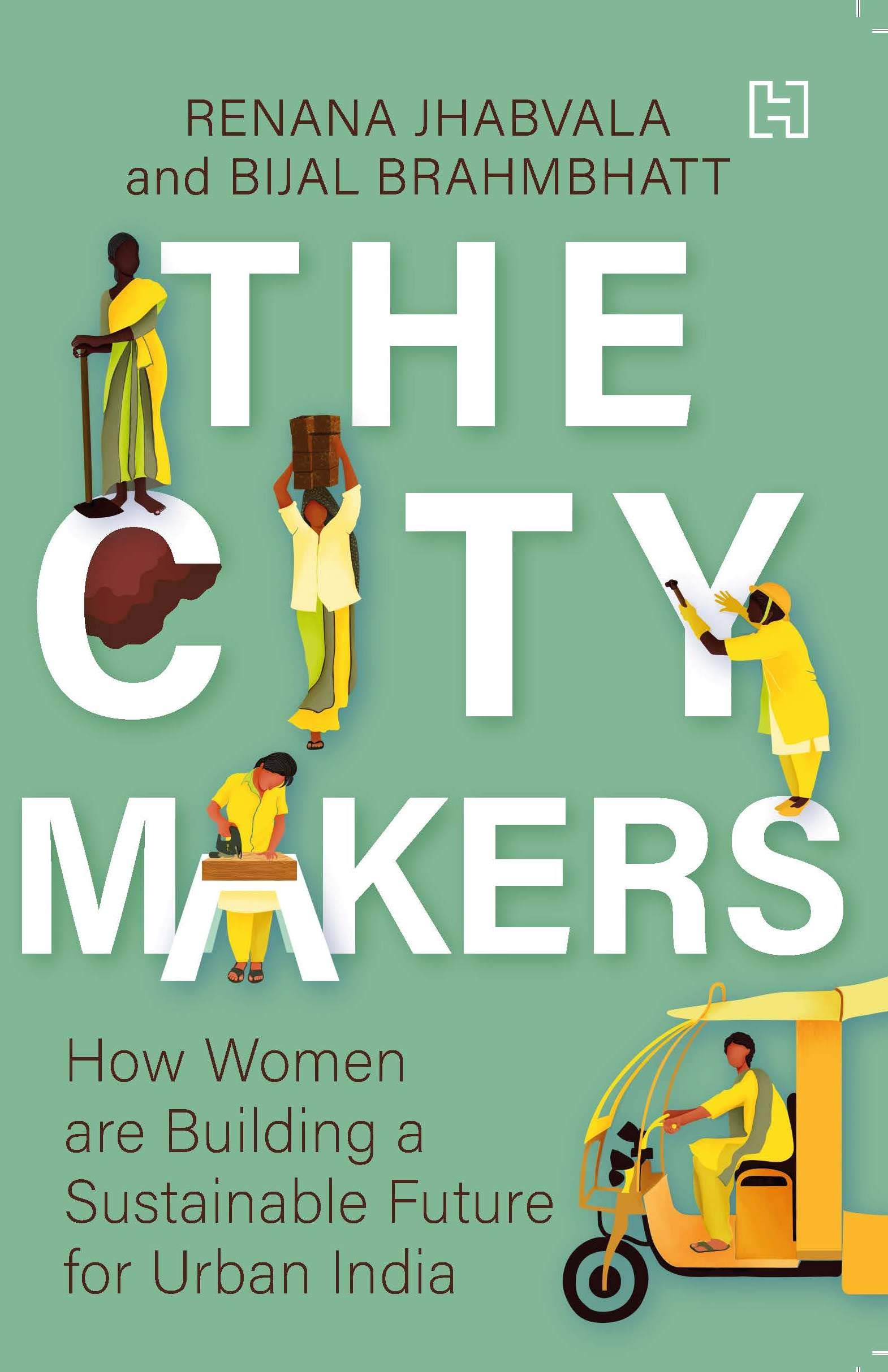Book: The City-Makers: How Women are Building a Sustainable Future for Urban India
Authors: Renana Jhabvala and Bijal Brahmbhatt
Publisher: Hachette
Price: Rs 399
The term, ‘empowerment’, used in connection with vulnerable groups, is integral to the contemporary development lexicon of States and NGOs. It is also liberally used in popular expressions today, its abundance fostering a kind of insouciance towards its implications. In the broad commonsensical understanding, ‘empowerment’ for the weak is a morally laden concept, an essentially good thing, which is endorsed across political ideologies and social locations regardless of how it is envisioned. Its fraught history is obscured by this generous use and, today, it is regarded unproblematically. The City-Makers, which documents how poor urban women secure fundamental amenities against all odds, provides an opportunity to critically reflect on the tensions surrounding this concept and the practices entailed in capacity building.
The role of the Self Employed Women’s Association in mobilizing poor women from the informal sector into cooperatives is well known. Its work has been widely documented by those from and outside SEWA. Since the 1970s, SEWA has expanded and developed new initiatives. The Mahila Housing SEWA Trust is one of them, where the participation of women from slums plays a key role in securing permanent housing. Chapter 1 outlines the organizational structure of the MHT. The following chapters document how women of the MHT negotiate with existing practices and policies to achieve permanent housing (Chapter 2), communal facilities (Chapter 3), and other amenities like electricity (Chapter 4). In a particularly revelatory chapter, land rights and challenges of acquiring legal documents of ownership have been addressed. Recounting the MHT’s work in Ranchi, the authors foreground how laws protecting communally-owned tribal land prevent tribal women from taking advantage of State subsidies to build permanent houses on tribal property (Chapter 5).
The authors have been long associated with SEWA, Brahmbhatt currently heading the MHT. They have the advantage of elaborating practices with examples from the field. The book animates concepts like ‘sustainable future’ and ‘capacity building’ through narratives about how women prevail over their challenges. It shows what capacity building entails — lobbying, finance, networking, as well as directly enabling women to do, with the help of institutions like the Karmika School, which trains women in masonry (Chapter 8). Women are also trained in governance, planning and election processes, their ‘voice’ being chiselled by the Vikasini Manch. In this sense, the women are ‘makers’, as they bring into existence concrete objects — houses, roads, gutters, as well as abstract capacities like leadership and vision.

The City-Makers: How Women are Building a Sustainable Future for Urban India by Renana Jhabvala and Bijal Brahmbhatt, Hachette, Rs 399 Amazon
Some might remember the monograph on SEWA written by Kalima Rose in the 1990s. The City-Makers is of this lineage, deploying a familiar style of chronicling, with stories of particular women prefacing accounts of the MHT’s victories. What might have been novel then now appears worn out and bromidic. Its underlying ideology is disconcerting. The MHT sometimes partners with private enterprises. These are often commercially driven. For example, in Ahmedabad, the prospect of additional revenue was incentive for a private electric company to offer legal connections to slums. More alarming is the faith that opening up tribal settlements to commercial developers and privatizing them would benefit lives so long as tribal women acquired legal rights to land. The implications of ‘empowering’ one group at the cost of rendering an overlapping category vulnerable are not debated.
Years ago, the Frankfurt School thinkers had argued that individual comforts were indistinguishable from political utility and indoctrination. The fundamental amenities of housing, sanitation, legal documents are not commodities of the same order they alluded to. Yet, the MHT’s work begs the question of whether the ‘upgradation’ of lives is entirely unproblematic, particularly where the poor are kept in the thrall of the informal economy, when their lives are marginally bearable. In the end perhaps, harnessing neoliberal capitalism to provide fundamental amenities to the poor is one of the most pragmatic solutions for now. Still one has to be wary of the beast one is riding. The MHT’s work is undoubtedly crucial and involves assiduous planning. But it must also cast a long and searching glance beyond its charter and its liberal notions of enterprise for women to confect futures in which they not only upgrade but also have the means to move upwards and even out of the informal sector.











